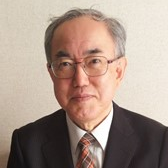Liquid Membranes
A special issue of Membranes (ISSN 2077-0375).
Deadline for manuscript submissions: closed (31 May 2011)
Special Issue Editor
Interests: ionic liquid-based extraction; deep eutectic solvent-based extraction
Special Issues, Collections and Topics in MDPI journals
Special Issue Information
Dear Colleagues,
When liquids that are immiscible with the feed and receiving phases are used as membrane materials, they are referred to as liquid membranes.
Since the 1960s, liquid membrane technology has been applied to gas separation, recovery of metallic ions, removal of organic compounds and recovery of fermentation products; and has been combined with a biotechnological process. Although many studies on liquid membrane technology have been conducted, practical success was limited mainly due to instabilities of the membranes. However, recent liquid membrane technology has made considerable advances. For example, use of ionic liquids as membrane materials instead of conventional organic solvents can overcome the above weakness. Furthermore, their application has been extended to the fields of waste-water treatment, and food and beverage production. We welcome papers about recent advances of liquid membrane technology in the various fields. We also welcome papers about liquid membrane-related technology such as analytical application and plasticized membranes.
Prof. Dr. Michiaki MatsumotoGuest Editor
Keywords
- liquid membrane
- supported membrane
- emulsion
- plasticized membrane
- hybrid membrane
Related Special Issue
- Advances in Liquid Membranes in Membranes (4 articles)






